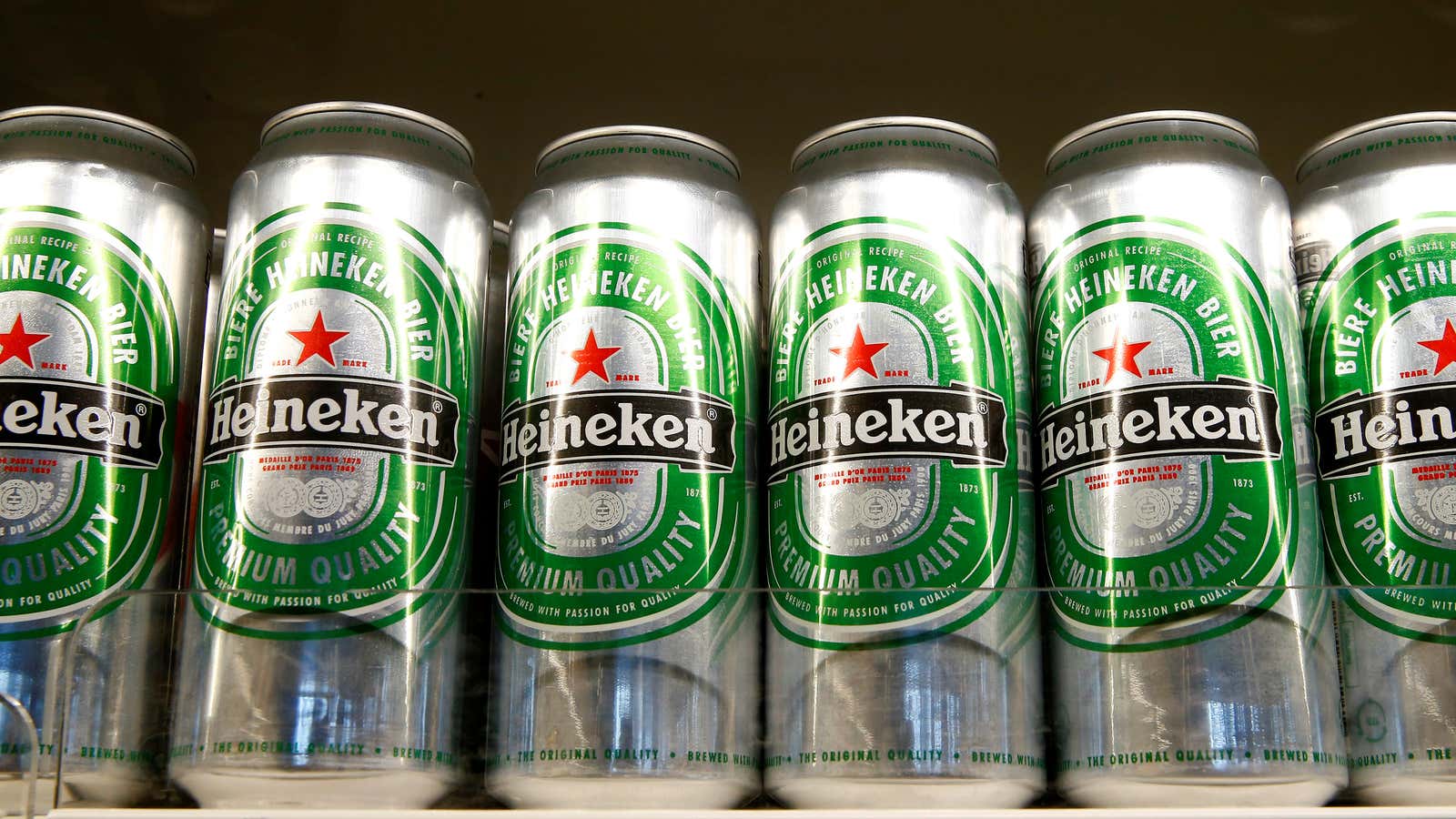Aluminum prices have jumped to the highest in 10 years, driven skyward in part by a crackdown on energy usage in China. That’s rippling through the cost of everything from Heineken cans to kitchen wrap.
Prices for the lightweight, silvery element have climbed 35% this year, according to FactSet. That’s been a boon for Pittsburgh-based Alcoa, the aluminum supplier whose stock price has almost doubled during that span. It’s been a different story for companies like Reynolds Consumer Products—the kitchen-wrap maker’s CFO recently told analysts that it’s facing hundreds of millions of dollars in increased costs from higher prices for resin and aluminum. Heineken’s CFO says commodity costs including aluminum have shot up “very, very materially in the last couple of months.” The world’s second largest brewer said it has hedged its commodity expenses, but those costs will hit the company next year.
Aluminum smelters in China, which has tightened restrictions on energy usage as part of its carbon-emission goals, are unable to keep up with the country’s demand for the element. That’s made the word’s biggest aluminum producer and consumer an importer of the metal, which in turn has pulled a greater share of aluminum warehousing away from the US and Europe to Asia, such as Malaysia’s Port Klang. Crimped conduits for freight and shipping have made it harder for Western companies to obtain aluminum, causing another uplift for the metal prices. Or as Alcoa CEO Roy Harvey said to analysts last month: “There’s just not enough metal inside of North America.”
